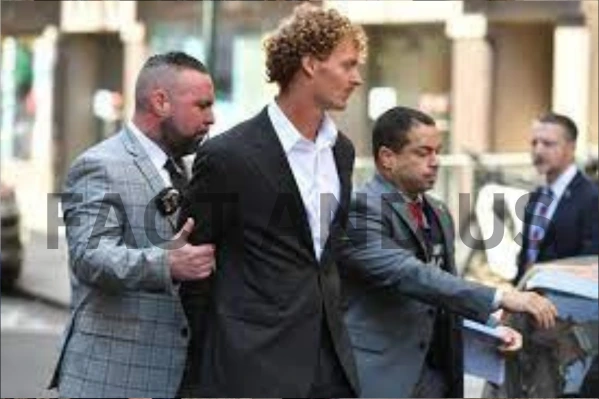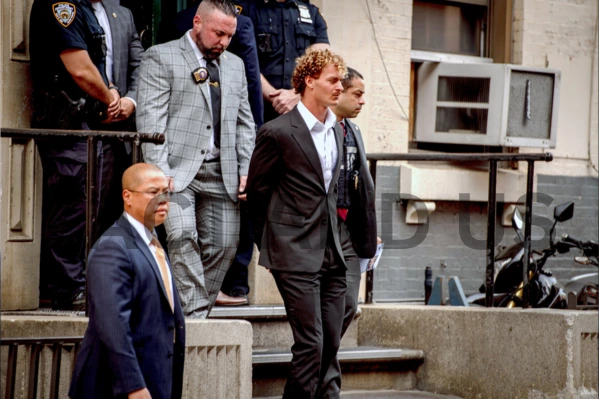After weeks of widespread media attention, the trial into the strangulation death of a homeless 30-year-old man who died on a New York City subway finally began. The case has continued to whirlwind the city and received national attention with everything set on Daniel Penny, a former Marine, who fastened Neely into chokehold following an altercation with him in May 2023. The video captured by fellow passengers when the incident unfolded left much at the heart of public debates concerning safety in the public sphere, mental health, and use of force in defense.

Today a former US Marine appeared in court charged with killing a homeless man with a fatal chokehold on a New York subway train. Daniel Penny, 25, pleaded not guilty to the charge of second-degree manslaughter and negligent homicide. Danie Penny, 25, pleaded not guilty to the charge of second-degree manslaughter and negligent homicide.
A black man, 30-year-old Jordan Neely, who witnesses said had been yelling at other people in the subway and begging for money, was pinned to the ground by Mr Penny, a white man, for several minutes and eventually killed. The May 2023 incident has become a quickening flash point in politics, with conservatives canonising Mr Penny as a hero but critics, including civil rights activists, decrying him as a vigilante who acted disproportionately.
A crowd of around 40 protesters brought the latest cause over Mr Neely’s killing to public attention as they awaited the start of jury selection outside the New York court house on Monday. Mr Penny, free on bail since his arrest, appeared on Monday in Manhattan Criminal Court, this time in a blue suit. He sat straight ahead as he made his way to sit beside his attorneys. New York Judge Maxwell Wiley said that the first days of the jury selection process will be committed to selecting Manhattan residents who could sit on a trial which would last for six weeks. The voir dire process of jury selection, in which prospective jurors are asked questions about their background and possible biases, is set to begin Friday.
Mr Penny, who said he acted in self-defence, faces up to 15 years behind bars if convicted of the manslaughter charge. Prosecutors say he put Mr Neely in a chokehold “that lasted approximately six minutes and continued well past the point at which Mr Neely had stopped purposeful movement”.


Fellow passengers filmed the incident, with a freelance journalist recording Mr Penny holding Mr Neely around the neck for several minutes. Witnesses said Mr Neely was shouting about being hungry and willing to return to jail or die, but there was no indication he physically attacked anyone. Witnesses said Mr Neely was shouting about being hungry and willing to return to jail or die, but there was no indication he physically attacked anyone.
Emergency workers could not resuscitate him, and Mr. Neely was pronounced dead at the hospital. The city medical examiner ruled his death a homicide due to compression of the neck. Mr. Neely was a Michael Jackson impersonator. He performed his act in Times Square and was famous all over the city.
Contents
The Tragic Incident
Jordan Neely, a popular impersonator of Michael Jackson who had struggled with homelessness and mental illness, was riding the subway on May 1, 2023. He began yelling and acting strangely while riding the subway; witnesses later reported that Neely expressed frustration over having no food and no place to live, which made some of the passengers feel uneasy.
At one stage of the onslaught, a former Marine, Daniel Penny, 24 years of age was seen to grasp Neely around the neck. It appears that an aim to hold Neely was made. The fight lasted several minutes. Neely went limp. However, bystanders and medicals tasked with reviving Neely were helpless as he was pronounced dead at the scene.

The video of the event quickly circulated and fueled outrage and calls to action for justice. Penny was convicted of manslaughter when the medical examiner ruled that Neely died from a homicide by “compression of the neck.” The case has since became a cause célèbre in debates on mental health, homelessness, and the role of bystanders in public spaces.
The Opening Arguments: The arguments open up
Both the prosecution and the defense have made opening statements: starkly differing versions of what happened on the subway that day.
Prosecution’s Case: Prosecutors believed that Penny’s response was quite excessive and unnecessary; therefore, it led to the avoidable death of Jordan Neely. The prosecutors said the man may have been being a pest, but he did not pose any immediate, direct physical threat to any of the passengers. The case on the other hand, underlines how Penny’s act of holding someone in a chokehold for nearly several minutes is not only risky but illegal. They want to prove that Penny’s training as an ex-military man should have educated him about any risks associated with such a hold especially within that period.
The defendant acted beyond self-defense and into manslaughter, one of the prosecutors declared. “Jordan Neely was not armed; lethal force was not justified.”.
The Defense’s Case: Penny’s lawyers, on the other hand, state that their client acted in self-defense and defense of others. Fear had been instilled in the other passengers from the erratic behavior and aggressive outbursts on the part of Neely, the defense argues, and they claim that Penny had no other choice but to stand up and respond. They are putting Penny forward as a Good Samaritan who acted on behalf of the public to protect the public from what they believed was a dangerous situation.

Other attorneys defending Penny say that Penny did not have it in his mind to kill Neely but merely to tie him up until help arrived. In his military training, Penny was taught on how to immobilize people during high-stress operations and had no evil intentions.
It is also important to have a larger conversation about mental illness and public safety.
Beyond the legal arguments, this case has been a catalyst for broader discussions about how society deals with public spaces when dealing with mental health crises. Neely’s tragic story shows the struggle faced by many homeless people in New York City who have untreated mental illnesses. According to Neely’s advocates, his death could have been prevented if there were adequate mental health and social services available to aid him long before the fateful encounter.
Many have pointed out that Neely had a history of mental health problems and had been in and out of shelters. Failures at the heart of the city’s mental health system stood exposed in his death, and renewed calls were made for treatment with greater compassion in dealing with homelessness and mental illness.
This has nothing to do with that sad moment on the subway,” a mental health advocate said. “This has everything to do with a system that failed Jordan Neely long before that day.”
Public Reaction and Protests
The death of Neely has rallied protests across New York City, protesters demanding justice for Neely as well as charges brought upon Penny. Proponents of Neely have deemed the charged delay against Penny a case of racial injustice because Neely is Black while Penny is white, as the case has been racially perceived differently in communities.

On the other hand, some have rallied around Penny on grounds that he is a bystander who makes the right decision at a moment of chaos. New York City has, for instance, become the city where crime rates are on the up, and such violent eruptions occur in public transportation, and individuals take it upon themselves to take the law into their hands.
Arguably, public discourse is divided on this trial because while some perceived the actions of Penny as excessive in their force, others think it as something necessary if there was a risk of something being dangerous.
What’s Next?
Throughout the trial, jurors are expected to listen to testimony from eyewitnesses, medical experts, and possibly Daniel Penny himself. In any case, the case is going to attract a lot of attention, both because of its implications on law as well as what it says about public safety, race, and mental health going forward.
It will depend entirely on whether the jury finds Penny’s actions to be justified as a form of self-defense or even manslaughter. The case raises complex questions about what limits force is, especially when applied to people in mental health crises, and if what Penny did aligns with the reasonable person that would have taken such action under similar circumstances.

Conclusion: A City Holds Its Breath
Jordan Neely’s murder trial is sure to be one of the most closely watched cases in recent New York City history, a case that raises themes embedded at the core of the issues the city is grappling with: mental health care, homelessness, race relations, and public safety. And as the trial unfolds, its outcome may decide not just Daniel Penny’s fate but how the city and the country itself think about those same pressing issues.
The justice system will work its way through the difficult questions presented in this tragic and intensely divisive case and the rest of the nation, and New Yorkers, will be watching.
stay connected with fact and us for more such news
